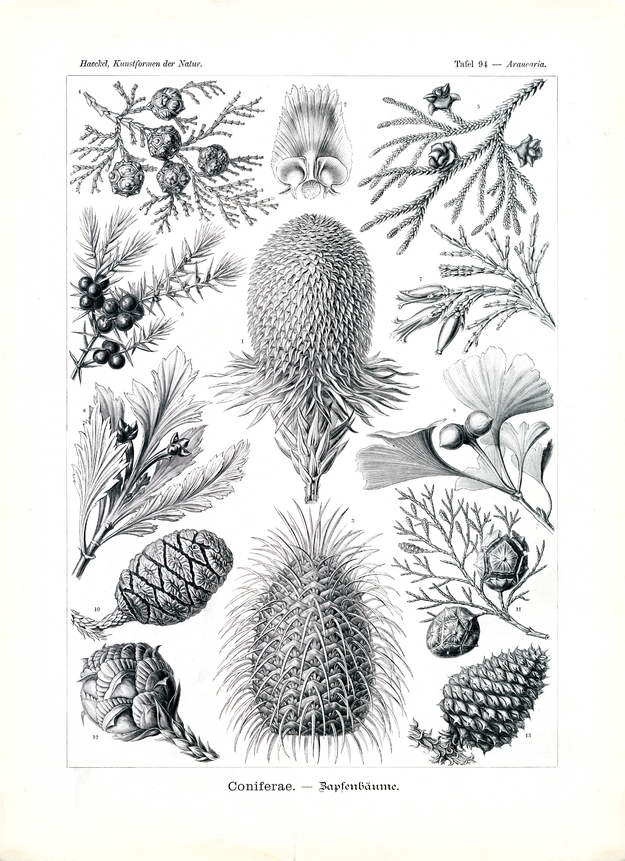Translation of the original German introduction by Ernst Haeckel:
Division of Phanerogamae or Anthophyta (Blumenpflanzen); - main class of Gymnosoermae (Nacktsamige); - class of Coniferae (Zapfenbäume or Nadelhölzer).
The varied class of ‘cone-trees’ or conifer-wood (Coniferae) forms the highest developed group of gymnospermous ‘flower-plants’. This oldest main class of Phanerogamae phylogenetically forms the transition from ferns (Pteridophyta, plate 52 and 92) to the younger angiosperms (Angiospermae). Their connecting intermediate position is particularly obvious in the structure of the flower. The female ovules covering the embryo sac (Macrospore) are, in the case of angiosperms, encased in rolled-up fruit-leaves (Carpella) that coalesce to form an ovary with pistil and stigma. Gymnosperms lack this protective mechanism with the ovules resting nakedly on the fruit-leaves. Older Gymnosperms are ‘fern-palm-trees’ (Cycadeae) and gingko-trees (Gingkoneae, fig. 9); they still resemble their ancestors, ‘scale-ferns’ (Selagineae) that possessed flexible spermazoids (Microspores). These have developed into smooth, inflexible sperm cells (pollen grains, pollen) in the younger gymnosperms, conifers and gnetum, also all angiosperms. The extraordinary variety and beauty of the flowers and of the angiospermous fruits originating from them is a product of the last main stage in the history of the earth only, the Tertiary Age; angiosperms started developing only in the preceding Cretaceous Period. Before the latter, during Jurassic- and Triassic Period, Gymnospores formed the major component of the plant life on earth; during these two periods actual “flowers” are still missing. Distinct fruits of conifers are fleshy berries with seed case (Arillus, fig. 6) in the older yews, woody cones (Strobi) in younger Pinaceae; lignified fruit-leaves are organized around the common axis of the flower head in tight spirals.
Translation by VR Translators Bangalore
We've scanned the original lithography at 1200dpi on the Epson A3 scanner of A3 scanner huren. You can download a 400dpi JPEG here.
